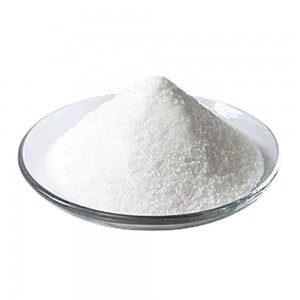Pharma Ingredients
-

Fmoc-Lys(Pal-Glu-OtBu)-OH
Fmoc-Lys(Pal-Glu-OtBu)-OH is a specialized lipidated amino acid building block designed for peptide–lipid conjugation. It features Fmoc-protected lysine with a palmitoyl-glutamate side chain, enhancing membrane affinity and bioavailability.
-

Fmoc-His-Aib-OH
Fmoc-His-Aib-OH is a dipeptide building block used in peptide synthesis, combining Fmoc-protected histidine and Aib (α-aminoisobutyric acid). Aib introduces conformational rigidity, making it valuable for designing helical and stable peptides.
-

Boc-His(Trt)-Aib-Glu(OtBu)-Gly-OH
Boc-His(Trt)-Aib-Glu(OtBu)-Gly-OH is a protected tetrapeptide fragment used in peptide synthesis and drug development. It contains strategically protected functional groups for stepwise coupling and features Aib (α-aminoisobutyric acid) to enhance helix stability and conformational rigidity.
-

Ste-γ-Glu-AEEA-AEEA-OSU
Ste-γ-Glu-AEEA-AEEA-OSU is a synthetic lipidated linker molecule designed for targeted drug delivery and antibody–drug conjugates (ADCs). It features a stearoyl (Ste) hydrophobic tail, a γ-glutamyl targeting motif, AEEA spacers for flexibility, and an OSu (NHS ester) group for efficient conjugation.
-

Fmoc-Ile-αMeLeu-Leu-OH
Fmoc-Ile-αMeLeu-Leu-OH is a synthetic protected tripeptide building block featuring α-methylated leucine, commonly used in peptide drug design to enhance metabolic stability and receptor selectivity.
-

Dodecyl Phosphocholine (DPC)
Dodecyl Phosphocholine (DPC) is a synthetic zwitterionic detergent widely used in membrane protein research and structural biology, especially in NMR spectroscopy and crystallography.
-

Donidalorsen
Donidalorsen API is an antisense oligonucleotide (ASO) under investigation for the treatment of hereditary angioedema (HAE) and related inflammatory conditions. It is studied in the context of RNA-targeted therapies, aiming to reduce the expression of plasma prekallikrein (KLKB1 mRNA). Researchers use Donidalorsen to explore gene silencing mechanisms, dose-dependent pharmacokinetics, and long-term control of bradykinin-mediated inflammation.
-

Fitusiran
Fitusiran API is a synthetic small interfering RNA (siRNA) investigated primarily in the field of hemophilia and coagulation disorders. It targets the antithrombin (AT or SERPINC1) gene in the liver to reduce antithrombin production. Researchers use Fitusiran to explore RNA interference (RNAi) mechanisms, liver-specific gene silencing, and novel therapeutic strategies for rebalancing coagulation in hemophilia A and B patients, with or without inhibitors.
-

Givosiran
Givosiran API is a synthetic small interfering RNA (siRNA) studied for the treatment of acute hepatic porphyria (AHP). It specifically targets the ALAS1 gene (aminolevulinic acid synthase 1), which is involved in the heme biosynthesis pathway. Researchers use Givosiran to investigate RNA interference (RNAi)-based therapies, liver-targeted gene silencing, and the modulation of metabolic pathways involved in porphyria and related genetic disorders.
-

Plozasiran
Plozasiran API is a synthetic small interfering RNA (siRNA) developed for the treatment of hypertriglyceridemia and related cardiovascular and metabolic disorders. It targets the APOC3 gene, which encodes apolipoprotein C-III, a key regulator of triglyceride metabolism. In research, Plozasiran is used to study RNAi-based lipid-lowering strategies, gene-silencing specificity, and long-acting treatments for conditions such as familial chylomicronemia syndrome (FCS) and mixed dyslipidemia.
-

Zilebesiran
Zilebesiran API is an investigational small interfering RNA (siRNA) developed for the treatment of hypertension. It targets the AGT gene, which encodes angiotensinogen—a key component of the renin-angiotensin-aldosterone system (RAAS). In research, Zilebesiran is used to study gene silencing approaches for long-term blood pressure control, RNAi delivery technologies, and the broader role of the RAAS pathway in cardiovascular and renal diseases.
-

Caspofungin for Antifungal Infections
Name: Caspofungin
CAS number: 162808-62-0
Molecular formula: C52H88N10O15
Molecular weight: 1093.31
EINECS Number: 1806241-263-5
Boiling point: 1408.1±65.0 °C (Predicted)
Density: 1.36±0.1 g/cm3(Predicted)
Acidity coefficient: (pKa) 9.86±0.26 (Predicted)

